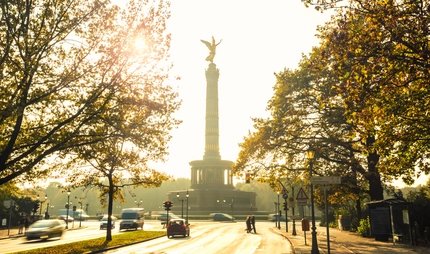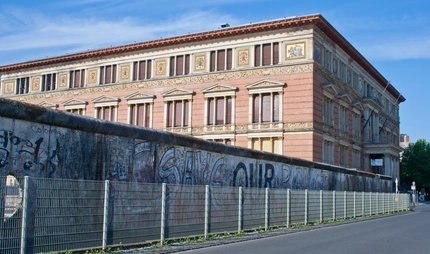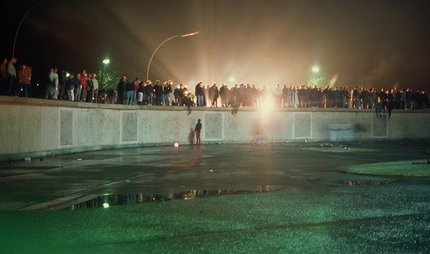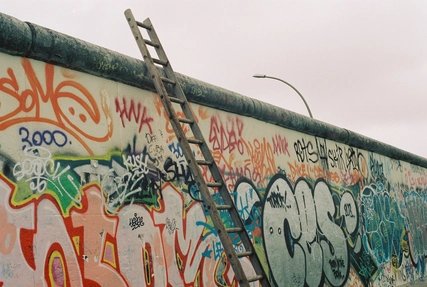
On the way to the reunification of Germany, there were numerous key moments - and just as many places where this history becomes tangible. Whether the scene of major political upheavals or a place of peaceful resistance - each of these sites tells its own story of the fight against division, the fall of the Wall and the joy of regained freedom. We take you on a chronological journey from the construction of the Wall to a reunited Berlin.
Tip: Discover Berlin with our ABOUT BERLIN app. Our multimedia city guide takes you to the places where history was made in Berlin and brings historical moments to life. Now with many new tours and highlights relating to the fall of the Berlin Wall!
Download now for free.


Station 1: Bernauer Strasse - the construction of the Wall and the division of Berlin
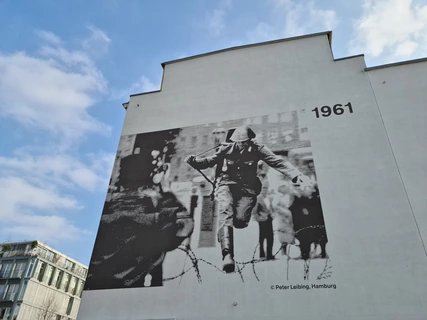
Bernauer Strasse ran along the border between Soviet-occupied East Berlin and French-occupied West Berlin. A photo was taken here that became famous around the world. It shows NVA soldier Conrad Schumann jumping over the barbed wire fence to freedom on 15 August 1961, just a few days after the Wall was built.
At the beginning of the construction of the Wall, the borders were almost exclusively marked by provisionally laid barbed wire, so that it was still possible to escape at the last second. Today, the Berlin Wall Memorial on Bernauer Strasse commemorates this dramatic history. It stretches along part of the original border and includes an original section of the Wall as well as a visitor centre that documents the history of the division of Berlin.
Station 2: Palace of Tears - The Loss of Freedom
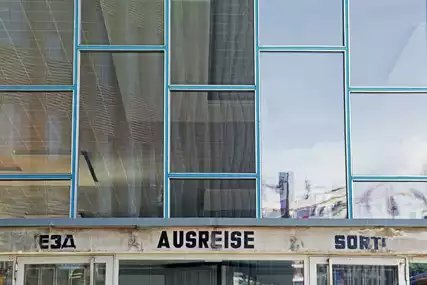
The Palace of Tears (Tränenpalast), which you can visit today as a small museum, was used from 1962 to 1990 as a border crossing for travelling between East and West Berlin. However, it was in fact a border crossing that was impassable for people on the East side. Only very few GDR citizens - for example pensioners whose escape was no longer feared by the state - were able to enter or leave from East to West.
The Palace of Tears symbolises the lack of freedom of GDR citizens and is a reminder of how the Berlin Wall tore families and friends apart. You can experience the oppressive feeling of passport control for yourself - the demarcated control gates are still in their original state.
Station 3: Escape across the border - longing for freedom

The longing for freedom drove many people to make the risky escape attempt across the border between East and West Berlin. Most of them - estimates put the number at around 140 - paid for the attempt with their lives. In Berlin today, several memorials commemorate these victims of the Wall. For example, on the River Spree near the Reichstag building and the Bundestag, in Tiergarten, on Bernauer Strasse and at the Palace of Tears.
Guided tour along the course of the Wall
Station 4: The resistance formed in these churches
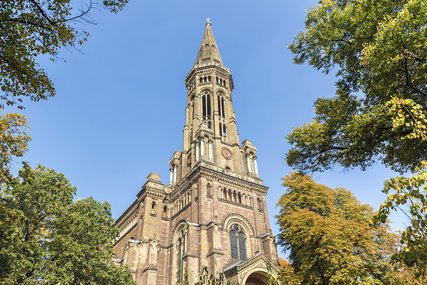
In the GDR, there were not many places where people could discuss their political views undisturbed. Anyone who wanted to get involved in any kind of political opposition had no options. In the 1980s in particular, some churches developed into protected spaces in which the resistance could form.
In Berlin, the Zionskirche and the Gethsemanekirche were particularly well-known meeting places for the opposition. Both places of worship are located in Prenzlauer Berg, where the intellectual milieu that questioned the SED government and the system developed.
City tour: East Berlin and the Cold War
Station 5 : Hohenschönhausen Memorial - A state apparatus for the suppression of freedom
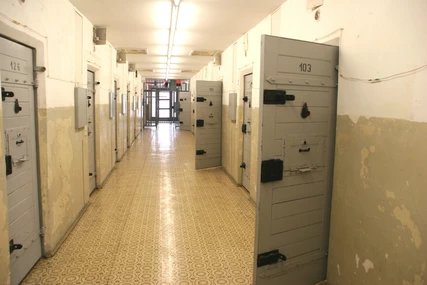
From 1951 to 1989, the complex served as a place for political prisoners, including members of the opposition, regime critics, escapees and people who wanted to leave the GDR. They were held and interrogated here without due process of law. The prison conditions were harsh: isolation, psychological torture and humiliation were part of everyday life. There was a system behind these methods: the State Security, often referred to as the "Stasi" for short, pulled the strings and monitored GDR citizens in order to nip any desire for freedom in the bud.
At the Hohenschönhausen Memorial, you can take part in regular guided tours with contemporary witnesses and visit original cells and interrogation rooms.
Station 6: Turning point - Large demonstration on Alexanderplatz
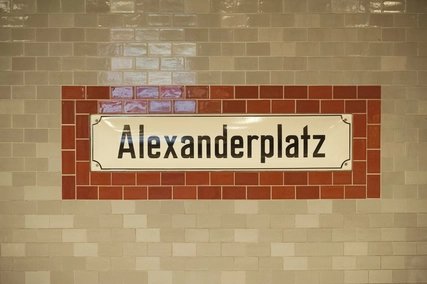
If you walk across Alexanderplatz today, you can expect lots of shops, hustle and bustle and often stalls for various festivals. On 4 November 1989, Alexanderplatz was the scene of the most important protest in the final phase of the GDR. The demonstration with 500,000 people was organised by GDR artists and intellectuals and, remarkably, had been officially registered and approved. The reasons for this can only lie in the increasing pressure on the SED government, which had to admit the failure of its repressive tactics.
The demonstrators demanded comprehensive freedom rights, a reform of the political system and the end of state surveillance by the Stasi. It was the first and only time that people were able to come together for a peaceful protest in this form in the GDR. The Berlin Wall came down just five days after the demonstration.
Station 7: Accidental border opening changes the world forever
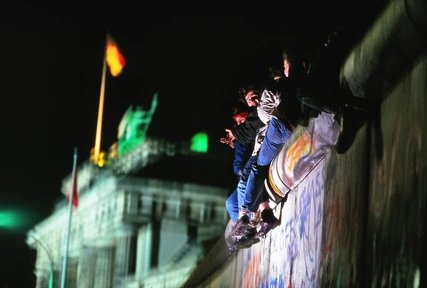
As the previous station has shown, the call for change was loud and the pressure on the GDR government was enormous. So on 9 November 1989 it only took a small misunderstanding to trigger the fall of the Wall in a fateful chain reaction.
SED politician Günter Schabowski was actually only supposed to announce the intended relaxation of travel regulations that evening in the International Press Centre at Schwedter Straße 10 - the rest is history. Schabowski inadvertently ordered the change as an immediate measure and GDR citizens stormed to the border to demand their promised departure. The building where the world was turned upside down is now inconspicuous and houses a school and various cultural and social projects.
It could have turned out differently...
Station 8: Brandenburg Gate - Triumph for Freedom
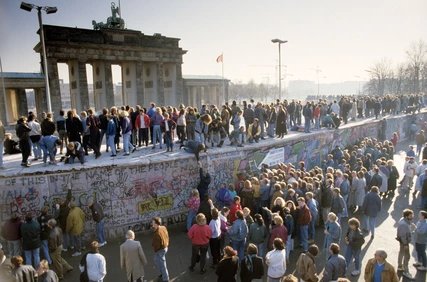
No other place is more closely associated with the fall of the Berlin Wall than the Brandenburg Gate. Not only because many people came here first on that fateful evening, but also because it had previously been the site of protests. The celebrations of official reunification took place at the Brandenburg Gate on 3 October 1990 and so the holiday is celebrated every year at this historic location with a large concert. It's hard to believe that the Brandenburg Gate was located right on the border strip before the fall of the Wall. So remember this when you stroll through during your visit to Berlin.
Station 9: Cherry blossoms at the "Bornholmer Brücke"
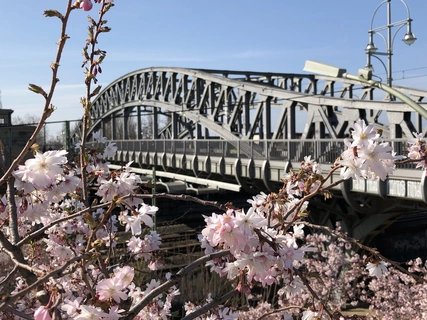
Although many people gathered at the Brandenburg Gate on the night of the fall of the Wall to demand entry to West Berlin, the first mass crossing of the border actually took place on the Bösebrücke, and only shortly afterwards at the Brandenburg Gate.
The border crossing "Bornholmer Brücke", as it is often called, is said to have been the scene of heartbreaking scenes. Many people who had experienced the Wall as an insurmountable border for years felt their first freedom here.
What can you see at the Bösebrücke? Admittedly, today it is simply a bridge under which the S-Bahn stops at Bornholmer Straße station. If you want to come here to read the memorial plaque, we recommend doing so in spring, when the cherry blossoms are in full bloom. Incidentally, the cherry blossoms do not bloom here by chance. In 1990 - immediately after the fall of the Berlin Wall - the Japanese city of Kawaguchi donated a total of 1,000 cherry trees to the city of Berlin.
Station 10: Rathaus Schöneberg - "Ich bin ein Berliner"
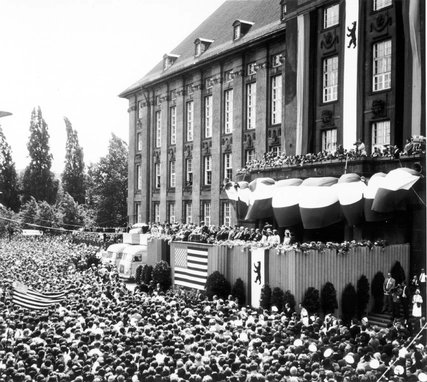
From the construction of the Berlin Wall until its fall, Schöneberg's town hall had great relevance. Before reunification, it was the seat of the Berlin Senate. Citizens regularly demonstrated in front of the town hall in favour of an end to the Cold War. One particularly significant event was the speech by US President John F. Kennedy on 26 June 1963, which he gave in front of Schöneberg Town Hall. The famous words were uttered: "Ich bin ein Berliner".
One day after the fall of the Berlin Wall, one of the first major celebrations took place in front of Schöneberg Town Hall. There was also a press conference with the then Governing Mayor of West Berlin, Walter Momper, in which the historic event was addressed.
Station 11: Potsdamer Platz - A city grows together again
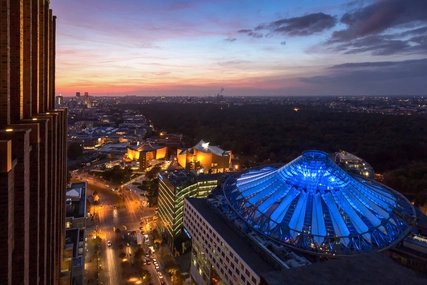
In the 1990s, the major construction site of Berlin was created around Potsdamer Platz, which had been located in the death strip for the entire duration of the Wall. Entire television documentaries were produced about the huge, visionary construction project that was supposed to bring the square back to life. One of the most iconic buildings you can admire here is the Sony Centre by architect Helmut Jahn (now the "Center am Potsdamer Platz"). The roof construction consists of glass and steel cables and stretches like a tent over the open square. It is reminiscent of Fujisan, a sacred mountain in Japan, and is visible from afar in the cityscape.
An interesting detail is a historical traffic light system that you can see on Potsdamer Platz. It is a replica of Berlin's first traffic lights, which were erected here in the 1920s and shows that Potsdamer Platz was once already a vibrant traffic artery before the Second World War.

